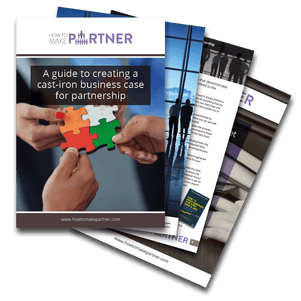In this blog article I discuss the financial implications of becoming a partner. For example, the buy-in process, how you get paid etc
You will be asked to buy-in
The process to become a partner is not just another promotion. It is where your partners trust you enough to have you as their business partner and allow you to buy a slice of equity in the firm. I.e. buy-in. However, the buy-in process can differ drastically dependent on the size of your firm and the nature of the partnership agreement. For example, in this article from AICPA.org, the future partners in the firm of Smith, Kunz & Associates from Rexburg, Idaho, bases the buy-in payment on the size of the future partner’s client portfolio.
Scott Smith, CPA/PFS, of Smith, Kunz & Associates in Rexburg, Idaho, is buying into his firm and expects to be named partner later this year. Smith, Kunz establishes a valuation of its firm and then figures out each partner’s portion of that valuation based on the partner’s clients. New partners essentially “buy those clients from the firm,” he said. Once the firm establishes what a soon-to-be new partner will owe, those on the partnership track pay down that amount with bonuses they receive from the firm. “As I generated more and more business, the bonuses got bigger and bigger, and at this point I have enough billings where I can make my buy-in payment and take money home,” Smith said, noting he has been paying in to the firm for four years.
Whereas most firms (that I am aware of), expect their soon-to-be partners to pay a large amount of money, either through a bank loan or personal finances, to buy their stake in the firm.
“This book is a secret weapon for your career”
- What due diligence should I do on my firm before buying-in?
- How much will I need to buy-in to a big 4 firm
- An idea of the size of client portfolio you will need to be a partner in a Big 4 firm
- See whether you are a good fit for partner in your firm
- Doing your due diligence: How to assess if your firm is solvent
- What are you being offered: salaried partner? Fixed share partner? Equity partner?
Find out how you will get rewarded as a partner
On the day you accept an offer of an equity (fixed share or full) partnership in a firm you will have to resign from your role as an employee and go self employed. Therefore, unless you are a salaried partner, you will not get a salary but will get paid out of the profits of the firm. Partners, in effect, draw down funds from the profits they are allocated by the firm, rather than receive a salary. If you are a fixed share equity partner you may find that you receive a ‘nominal’ salary and then a bonus based on your performance and the firm’s performance. It’s not unknown for firms to require partners to keep a certain amount of their profit share within their drawings account in case the firm has a bad year and needs to call upon these funds. It depends on how your firm is structured as to whether the firm will organise any benefits for their partners. I.e. pension scheme, life insurance etc. The benefits you were entitled to as an employee will stop the moment you become a partner. As you are self employed as a partner you will need to sort out all your financial affairs and no longer rely on your firm to do this for you. It can be very tempting to want to go on a massive spending spree when you become a partner. I would caution against this. After all, many junior partners, by the time they have paid off the interest from their partnership loan, will find that they may not be taking home much more than when they were employed by the firm.
What are you entitled to as a partner?
So far in this article we have talked about the buy-in process and your buy-in capital payment as well as how you get paid. It’s important to fully understand what you are committing yourself to as a new partner. The only way to find this out is to look at the partnership agreement. This agreement sets out how the partnership is governed and what each partner is entitled to as a partner of the firm. For example, maternity or paternity leave.
 Download this free guide today to take the fear and mystery out of writing your business case for partnership.
Download this free guide today to take the fear and mystery out of writing your business case for partnership.
Click to here download the guide (email required)









